Far too often, aglaonema are overlooked as fantastic low maintenance houseplants. And that’s a shame, because they are so versatile! They can handle low light situations (even fluorescent lighting in some cases!), don’t need a ton of babying, and can add a welcome burst of color.
Aglaonema is the botanical name, but you may also see this plant sold as the common name Chinese evergreen. Indoors, these plants grow 12-24 inches tall, and almost as wide, with long, lance-shaped leaves.
For a long time, the only cultivars of aglaonema available were different variations of green and cream. Nowadays, you can find Chinese evergreen with shades of pink, red, or even peach. Let’s get on board with aglaonema!
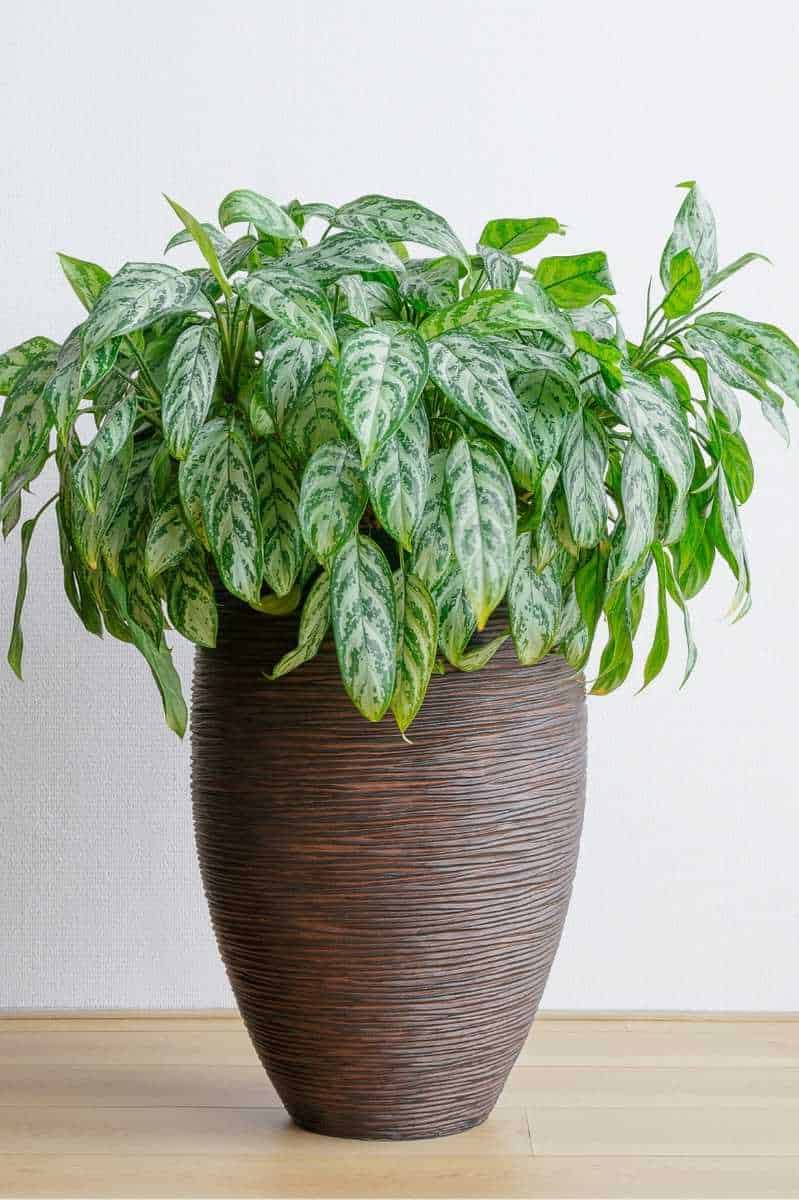
Table of Contents
How to care for an aglaonema plant
Light
While you’ll see the most growth from your aglaonema in medium light, many Chinese evergreen can handle low light conditions—some can even do fine in fluorescent lighting, making them great options for office plants! Do avoid direct sunlight for your aglaonema though, as it will burn the foliage.
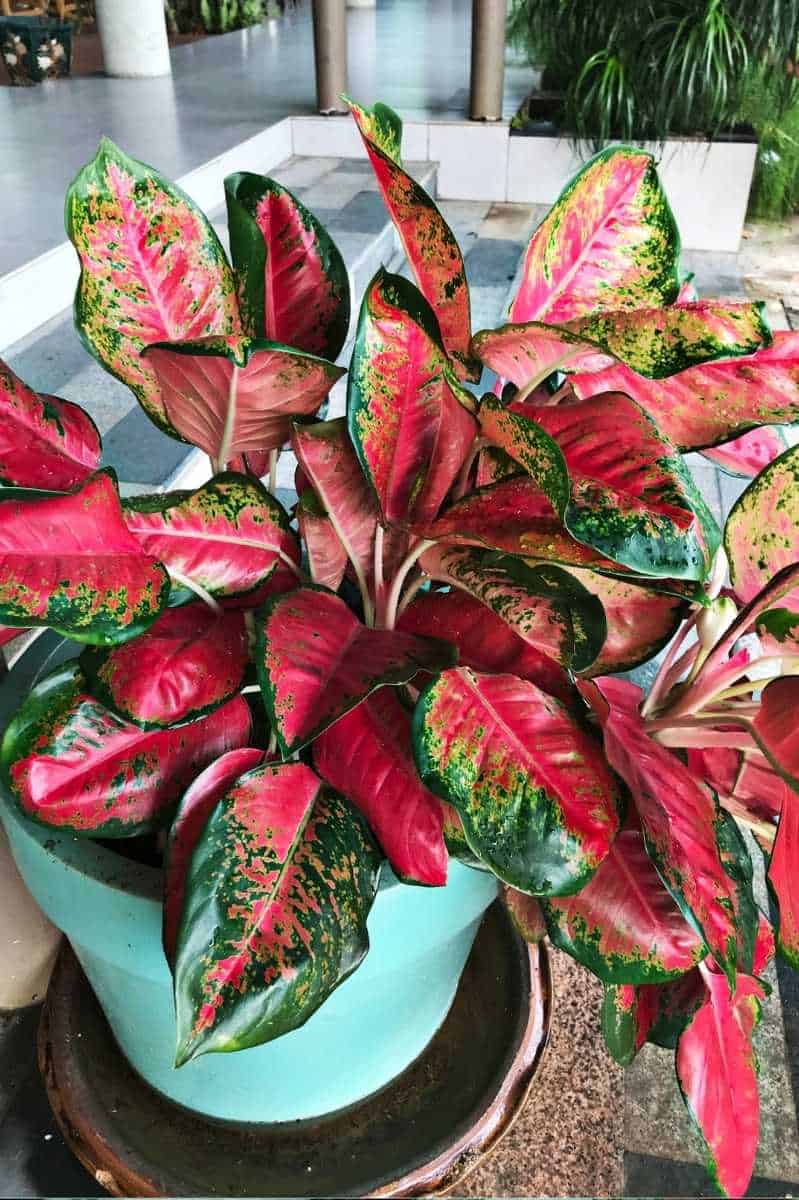
If you are looking for a plant for a northern window or another low light situation, we recommend choosing a plant that is mostly dark green or shades of green. The more colorful varieties need more light to keep their vibrant pinks, reds, or peaches.
Growfully Protip
If you notice the more colorful varieties of aglaonema starting to lose their vibrancy, try moving them to a sunnier spot. A medium amount of light should bring back their rosy colors.
Water & Humidity
Native to Southeast Asia, aglaonema are tropical or subtropical plants that are used to moist soils and plenty of humidity in nature. While they have adapted well to our home environments, many Chinese evergreen prefer more humidity than our homes naturally provide. To boost the humidity levels, try putting your plant on a pebble tray, use a humidifier, or group your aglaonema with other plants.
Growfully Protip
You can also mist your aglaonema a few times a week. It won’t do a ton to boost the humidity around your plant, but it will make a tiny difference, and it will knock off any pests that are trying to make your plant home!

While in nature, these plants would be in pretty consistently moist soil, if you are keeping them in low light situations, you need to let the soil dry out a bit between watering to keep fungal and bacterial problems or root rot from developing. Wait to water your aglaonema until the top 1-2 inches of soil are dry.
Growfully Protip
If your aglaonema is in medium light, you can water when the top inch of soil is dry. If it is in low light or under fluorescent light, you’re going to want to wait until closer to the top two inches of soil are completely dry.
Soil & Fertilizer
Any well-draining potting mix will work well for your Chinese evergreen. You may choose to apply a diluted liquid houseplant fertilizer a few times a year in the spring and summer.

Can aglaonema live outside?
Yes! In many climates, aglaonema can make beautiful additions to a patio or along a garden path in light to full shade outdoors. Just make sure to bring them inside in the fall when the temperatures start to drop if you want them to stick around for the following summer.
Can aglaonema survive in low light?
Yes, especially the older hybrids that are mostly various shades of green. In fact, some of these all-green hybrids can even do just fine under artificial lighting, which is why they are popular houseplants for offices.
The newer cultivars that have red or pink variegation don’t generally do quite as well in low light, though you can try it. If you see the color starting to fade, just move the plant to a spot with more light, and you’ll see the vibrancy come back soon!
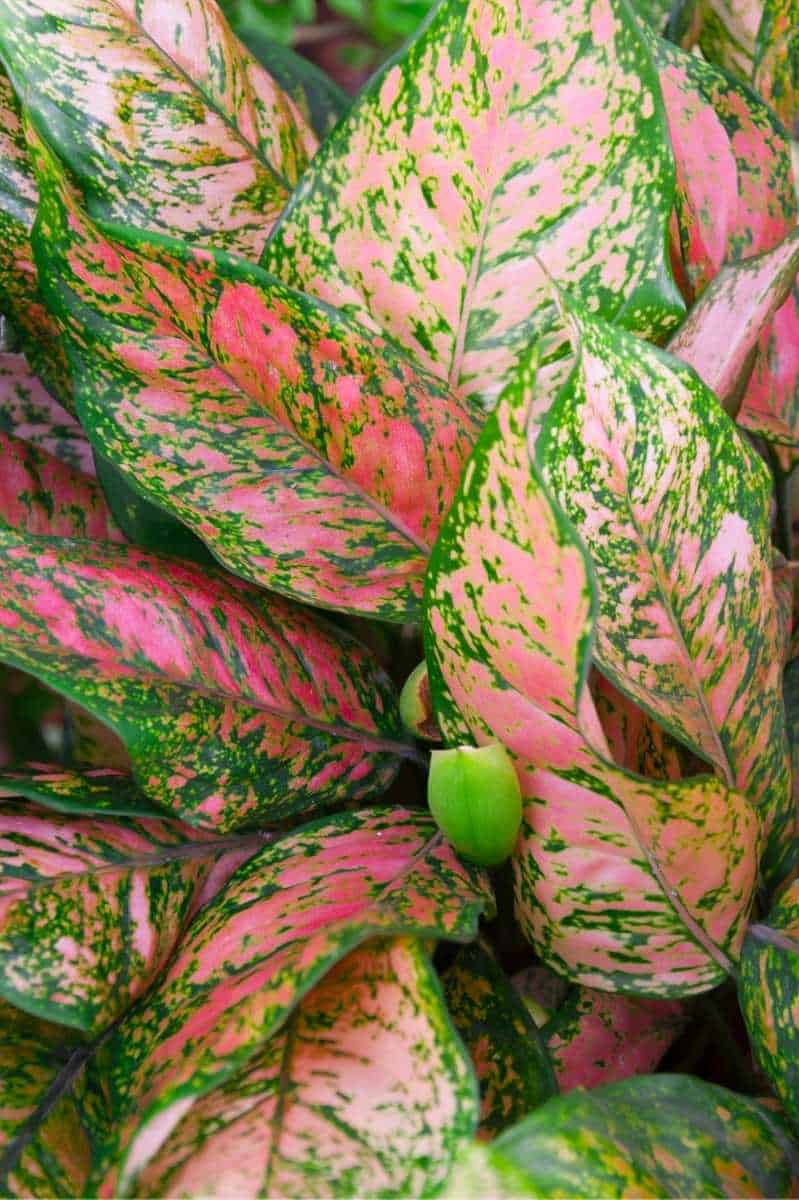
What kind of aglaonema do I have?
There are so many new cultivars of aglaonema on the market, it can be hard to keep track! Here are some of our favorites:
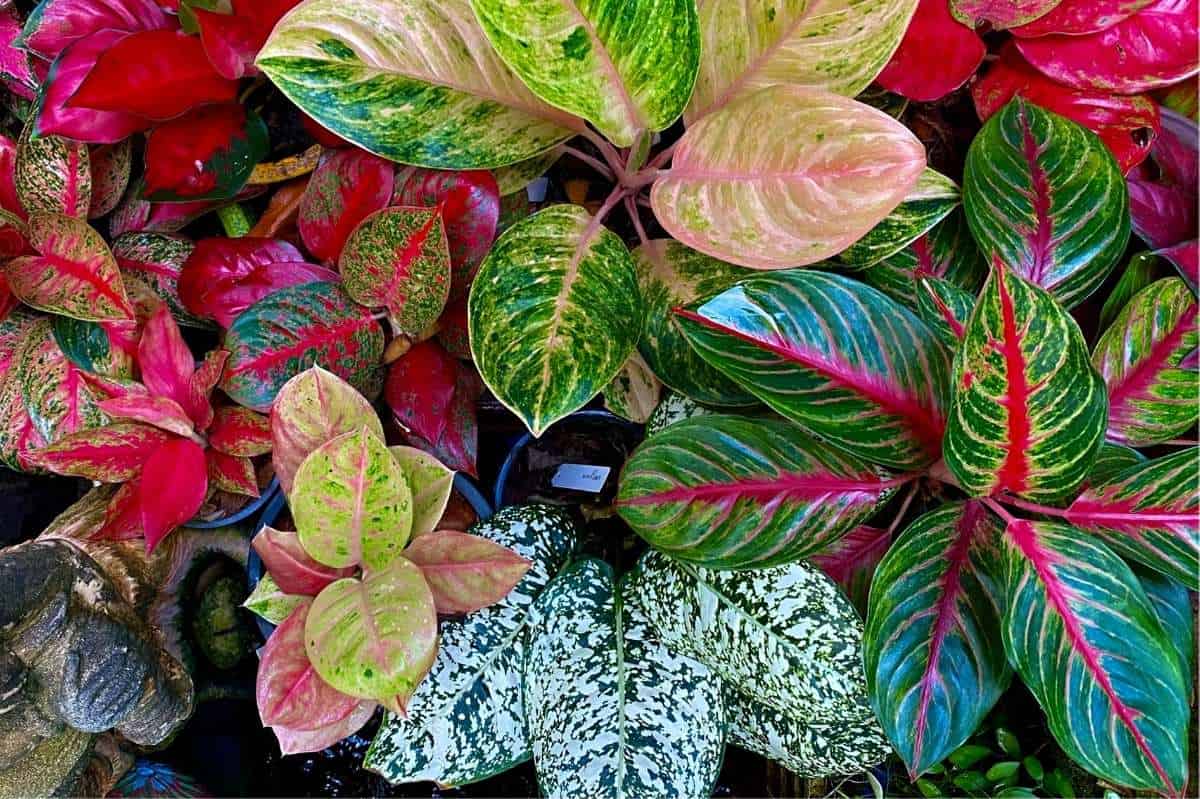
- Aglaonema Commutatum “Emerald Beauty” — Sometimes also sold as Aglaonema “Maria,” this classic variety has dark green leaves with light green stripes.
- Aglaonema “Sparkling Sarah” — This Chinese evergreen has pink stems and midribs, with pink mottling on its green leaves.
- Aglaonema “Ruby Red” — Not only are the leaves of this plant marked with bright red, but the stems are a lovely shade of pink as well.
- Aglaonema Commutatum “Silver Bay” — The wide leaves of Silver Bay are marked down the center with a light, almost-silver variegation.
- Aglaonema “Siam Aurora Red” — This aglaonema is a standout because in addition to having red stems and midribs, its leaves are framed in red.
Plant Problems
Pests
Aglaonema are susceptible to spider mites, mealybugs, and scale. Keep your plant healthy and happy, and pests will be less likely to infest your Chinese evergreen—a stressed plant is a much easier snack for insects! You may also want to use a preventative spray to keep bugs away. I personally use this Leaf Wellness Spray because it is made locally to me, but there are lots of options out there.

Why are my aglaonema leaves turning yellow?
Yellow leaves are your aglaonema signaling to you that it is stressed, so it is time to run some diagnostics:
1. Is your plant root bound? Your plant may be running out of room to grow in its current pot. If you see roots poking out of the drainage hole, it may be time to size up the pot. You can also check the roots by gently tipping the plant out of the pot into your hand. If the roots look tightly wrapped in the shape of the pot and you can’t see much soil, your Chinese evergreen is root bound. Repot the plant into a slightly larger pot with fresh soil, and you’ll have a happier plant.
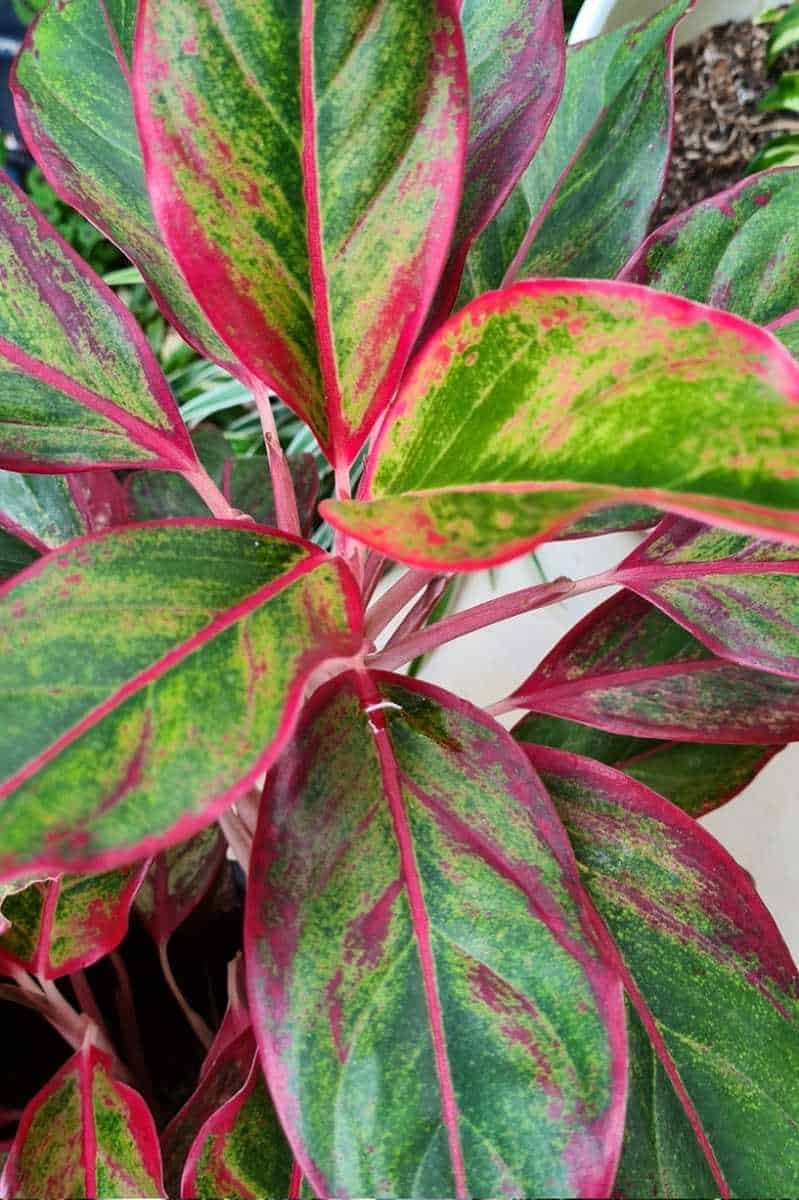
2. Is the plant overwatered? If the soil feels very moist and the leaves are yellowing, then your plant may be overwatered. Move the plant to a sunnier spot for a few days to help the soil dry out completely. Moving forward, be sure to only water when the top 1-2 inches of soil is dry.
Growfully Protip
If the soil is completely waterlogged, you may need to take more drastic measures. Remove the plant from its pot and shake off the soil. Gently wrap the roots in newsprint to absorb some of the moisture. Remove the newsprint and cut away any rotted roots (those that are mushy or smell bad). Repot in fresh potting soil.
3. Is the plant underwatered? If the leaves are turning yellow or brown only at the tips and are also becoming kind of crunchy, your plant may need more water. Aerate the soil gently with a wooden chopstick, and water thoroughly.

Why are my aglaonema leaves drooping?
This is another way your plant signals that it is stressed—either the moisture levels or lighting levels are way off. Probe the soil with your fingers.
If the soil is really dry, you’ll need to resaturate it. My favorite way to do this is by bottom watering:
- Fill a tub or large bowl with lukewarm water, and stick the pot inside, so that the roots can get a good drink from the bottom up.
- Let it sit for at least 30 minutes, adding more water to the bowl if needed, so that all the soil is saturated.
- After that, even if your aglaonema is usually in a low light spot, make sure it gets some bright indirect light for the rest of the day, to make sure the plant has a chance to use some of the water right away and isn’t sitting with wet feet in the dark, which is sure to lead to more problems.
If the soil is really moist and the leaves are discolored, then the plant may be overwatered. See “why are my aglaonema leaves turning yellow” above for instructions on correcting this.
Also check to make sure that your plant hasn’t been getting direct sun (sometimes the leaves can curl or droop to protect themselves against sunburn).
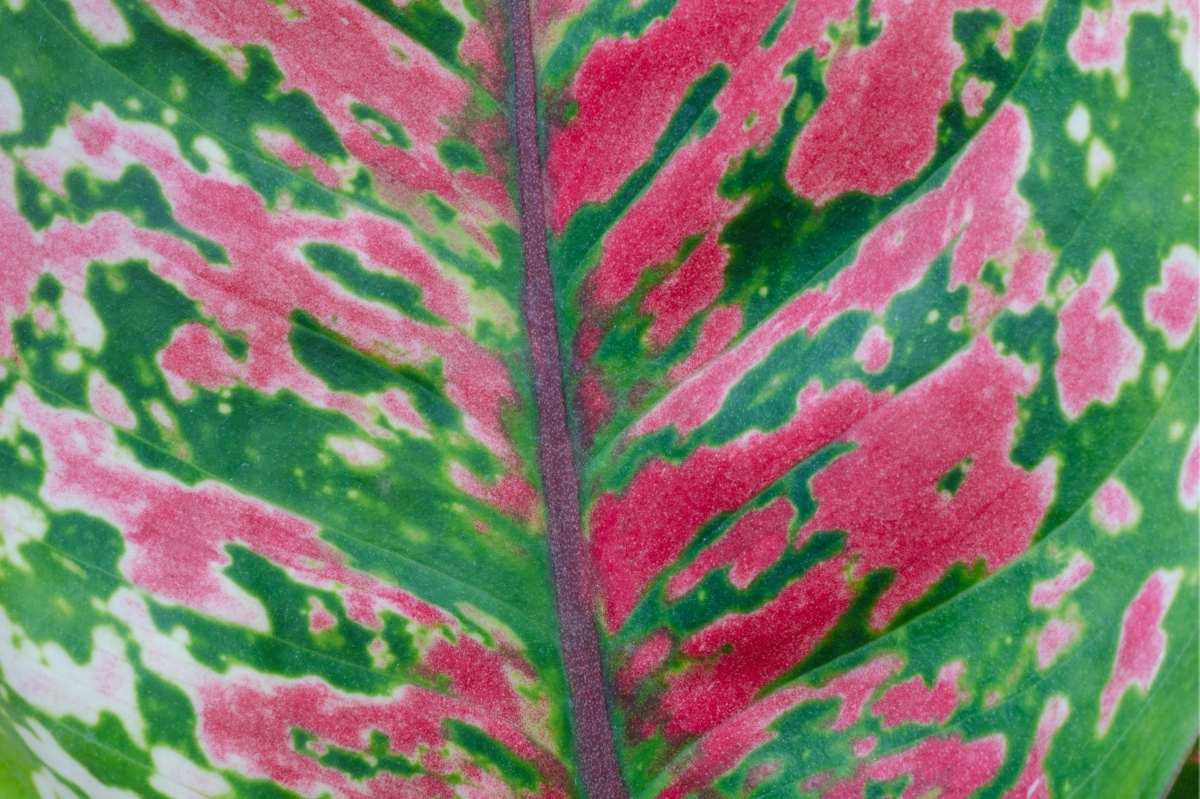
Why are my aglaonema leaves turning brown?
If the tips or edges of the leaves are turning brown and crispy, this is generally a sign of underwatering. Give your plant a good drink, make sure your plant is getting enough humidity, and consider changing your watering schedule.
If the leaves are developing brown spots that seem soft or mushy and have yellow halos, you may instead be looking at a bacterial disease. In this case, cut off the infected leaves, sanitize your tools thoroughly, and be careful to water only the soil and not the foliage moving forward.
Are aglaonema pet safe?
The ASPCA lists Chinese evergreen as toxic to dogs, cats, and horses, so keep this one out of reach of your fur babies!
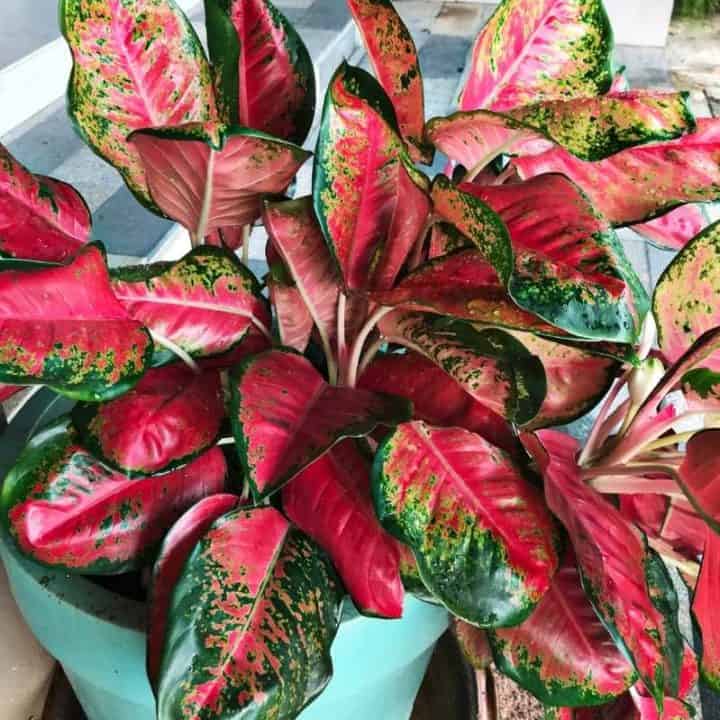
Aglaonema Care Guide
Materials
- Aglaonema Plant
Tools
- Container with a Drainage Hole
Instructions

- Use low to medium light. All Chinese evergreens will thrive with medium amounts of bright, indirect light. Less colorful aglaonema plants can handle lower light levels— varieties that are mostly green can even grow under fluorescent lighting!
- Water wisely. Wait to water until the top 1-2 inches of soil are dry. If you have your plant under artificial lighting or in a low light situation, let the top two inches of soil dry out before watering.
- Add humidity. Use a pebble tray or humidifier to boost the humidity around your aglaonema if you notice the leaf edges getting crispy or browned.
- Prevent pests. Use a preventative spray to treat for pests before they strike, and keep your plant healthy. A happy plant isn't as appealing to pests!

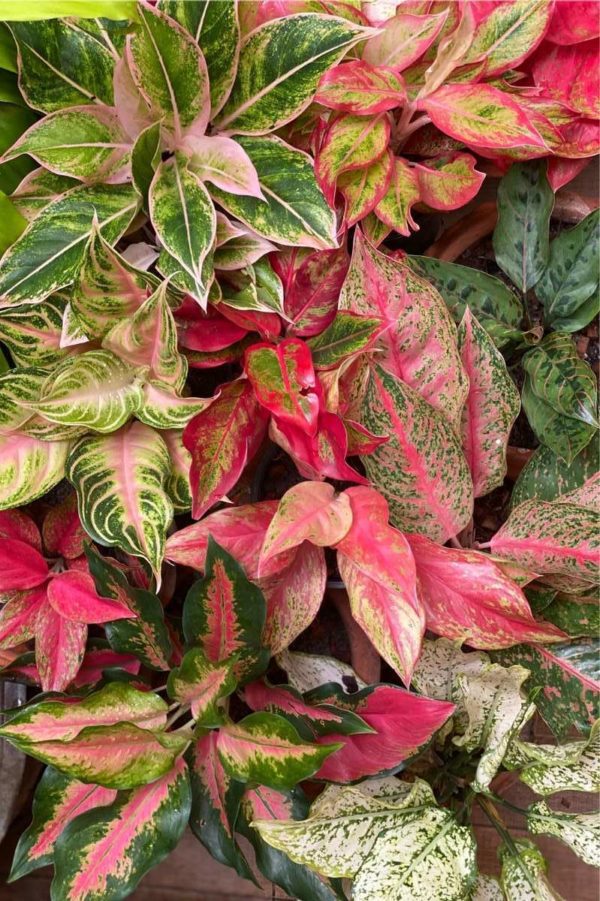






I live in the Los Angeles area. Can I plant the Ruby Red outdoors, in a pot, and a shaded area? Thank you!
We are in the midwest, so its hard to say. I suspect it would work though
How do u trim back a plant that has grown to large
You can just cut it back to the size you want, or you can divide a large plant into several smaller plants by breaking up/cutting up the root ball and repotting each new plant.
Aglaonema Pictum Tricolor is a beautiful plants, I have many plant. This article is useful for me. Thank you